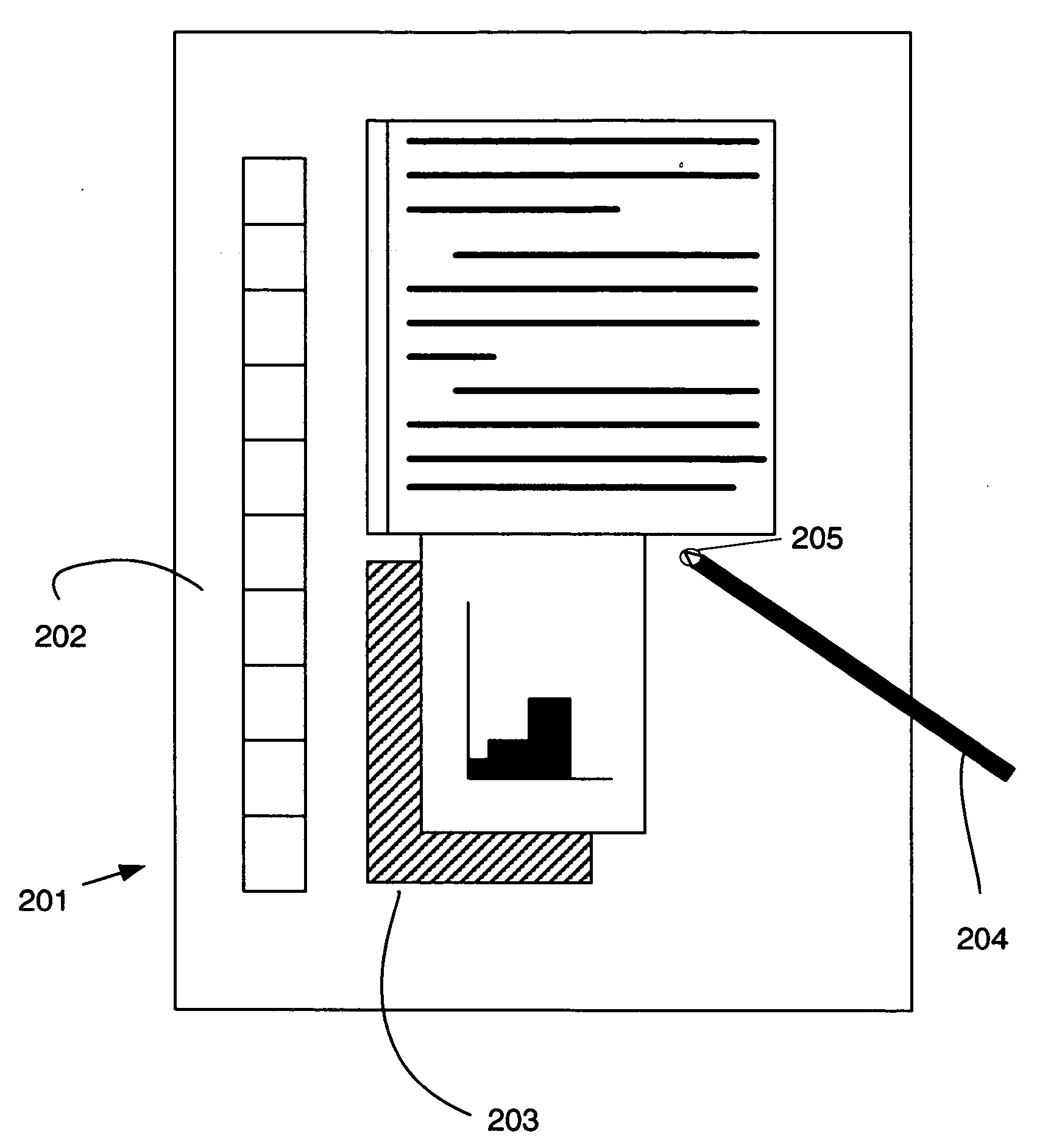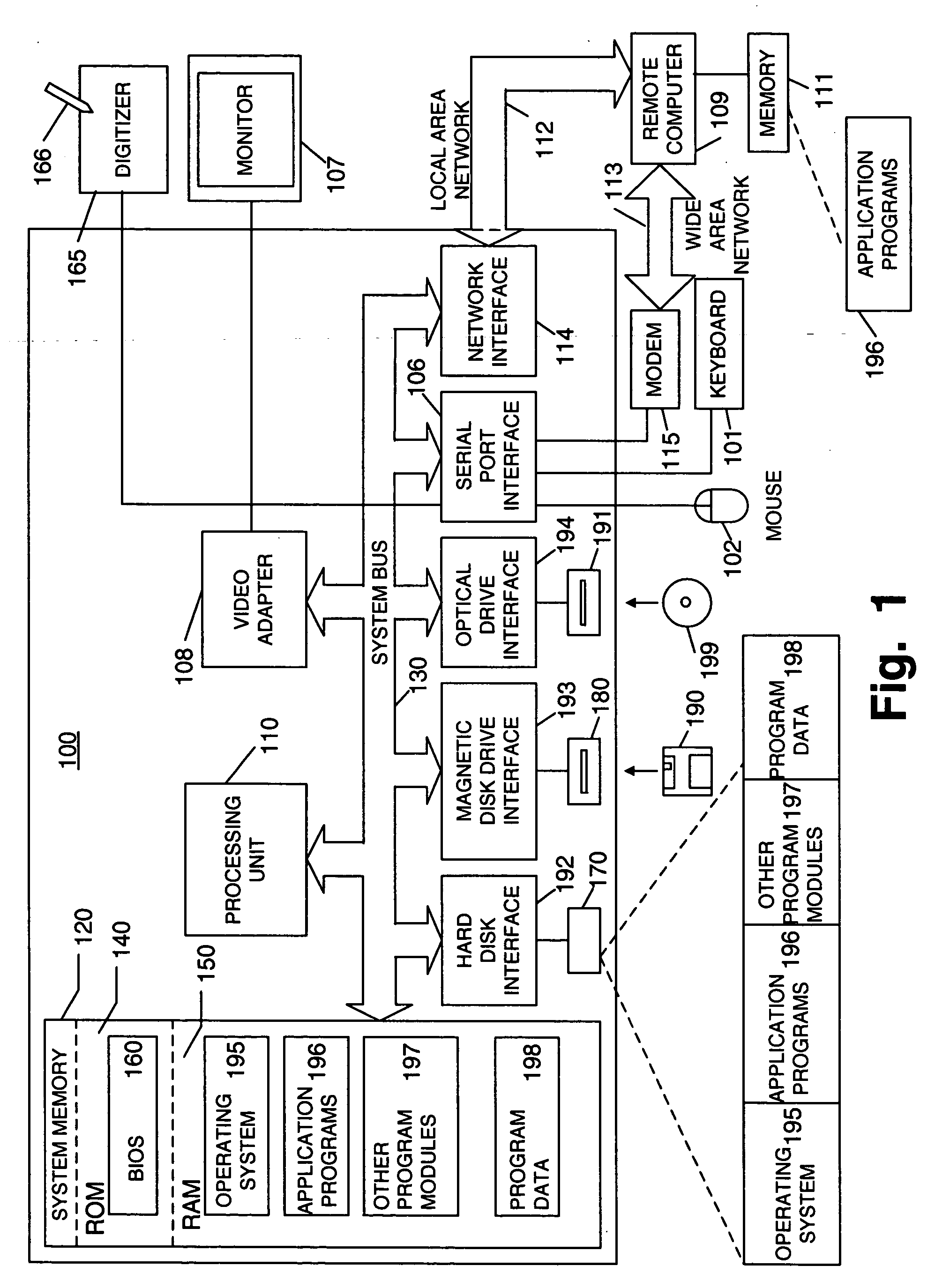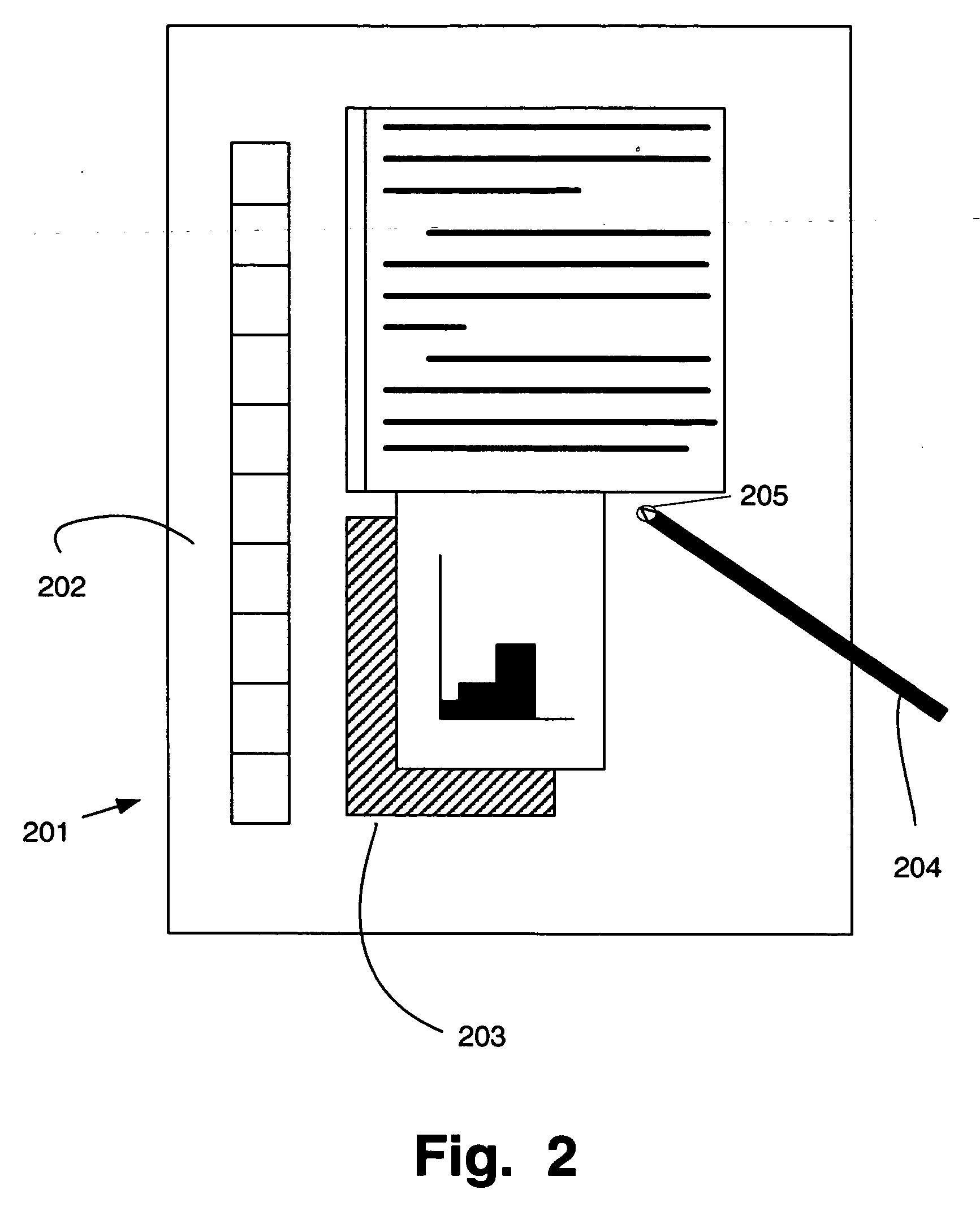Processing for distinguishing pen gestures and dynamic self-calibration of pen-based computing systems
a computing system and pen-based technology, applied in computing, electric digital data processing, instruments, etc., can solve the problems of affecting the ability of the pen to quickly or correctly recognize other pen operations or gestures, the pen will skid or move a substantial amount, and it is difficult to perform a tap gestur
- Summary
- Abstract
- Description
- Claims
- Application Information
AI Technical Summary
Benefits of technology
Problems solved by technology
Method used
Image
Examples
Embodiment Construction
[0022] As described above, aspects of the present invention relate to systems, methods, and computer-readable media for processing and using input information in pen-based computing systems, e.g., for better recognizing input gestures and / or for better calibrating the system hardware. The following description is divided into sub-sections to assist the reader. The sub-sections include: Terms; General Description of Various Aspects of the Invention; Example Hardware; Example Systems, Methods, and Computer-Readable Media According to the Invention; and Conclusion.
I. TERMS
[0023] The following terms are used in this specification and, unless otherwise specified or clear from the context, the terms have the meanings provided below:
[0024]“Ink” (also called “digital ink” or “electronic ink”)—A sequence or set of handwritten strokes. A sequence of strokes may include strokes in an ordered form. The sequence may be ordered in any suitable manner, such as by the time the stroke was capture...
PUM
 Login to View More
Login to View More Abstract
Description
Claims
Application Information
 Login to View More
Login to View More - R&D
- Intellectual Property
- Life Sciences
- Materials
- Tech Scout
- Unparalleled Data Quality
- Higher Quality Content
- 60% Fewer Hallucinations
Browse by: Latest US Patents, China's latest patents, Technical Efficacy Thesaurus, Application Domain, Technology Topic, Popular Technical Reports.
© 2025 PatSnap. All rights reserved.Legal|Privacy policy|Modern Slavery Act Transparency Statement|Sitemap|About US| Contact US: help@patsnap.com



